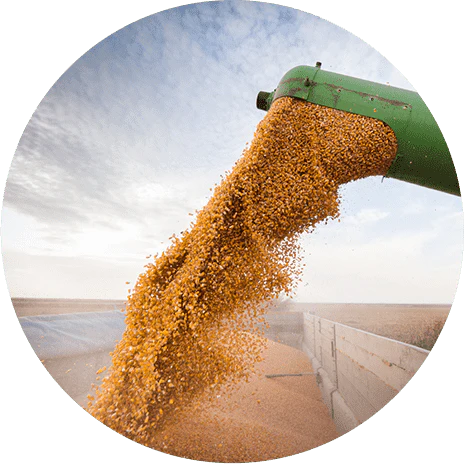
- When to plant:
- Spring, Summer
- Fertilizer:
- Hancock's 16-04-08 Lawn & Pasture Fertilizer
- Seeding rate:
- 15 lbs. per acre
- Seeding depth:
- 1/8 - 1/4 inch
- Ideal ph:
- 5.0 - 6.5
- Gmo:
- No
- Inoculant needed:
- No
- Coated or raw:
- Raw
- Lifecycle:
- Annual, Perennial
- Climate zones:
- Warm Season
Hancock's Southeast Native Quail Mix is dedicated to preserving and bringing back the native quail population of the Southeastern United States. The amount of each variety's seed in the mix has been calculated to add cover and food to draw the quail back to their natural habitats.
Product Information
- Application or Use: Food Plot, Cover Crop
- Germination Time: 7 - 14 days, under optimal conditions. Allow 3-4 weeks for the unstratified seed to break dormancy and germinate, under optimal conditions.
- Growing Locations: Warm Season, Transition Zone, Cool Season
- Height: 1 - 5 feet
- Sunlight Requirements: 8+ hours, full sun for best results
- Advantages: A blend truly dedicated to preserving and bringing back the native quail population.
- When to Plant: Recommended Planting Time is Spring and Summer when night time temperatures are consistently above 65 degrees.
This blend is designed for the environmental conditions of this region. Hancock's Southeast Native Quail Mix is a blend of wildflowers, legumes, millets and native grasses. This mix works well in full sun to moderate shade, and will thrive in the sandy or clay-based soils of the southeast United States.
We are proud to offer this convenient blend of top quality varieties for quail in hopes the native quail populations stay with us for many years to come...or forever!
Hancock's Southeast Native Quail Mix contains:
- Indiangrass
- Switchgrass
- Little Bluestem
- Virginia Wildrye
- Browntop Millet
- Partridge Pea
- Purple Coneflower
- Lanceleaf Coreopsis
- Illinois Bundleflower
- Korean Lespedeza
- Wild Bergamot
- Black-Eyed Susan
- Blanketflower
- Plains Coreopsis
*Product packaging may appear different than what is pictured.
Remove all old vegetation to prepare a clean seedbed by means of a disc. Drag area to loosen and level any hard or uneven spots if necessary. Apply a slow-release starter fertilizer at the recommended rate of 250 lbs. per acre. Fertilize three times a year for best results.
Broadcast seed at recommended rate. Drag or roll lightly to cover the seed no more than 1/4 in. below surface. If you are overseeding an existing area, it is pertinent to mow existing grass low and incorporate seed 1/4 in. into soil for best results. Apply irrigation for approximately 30 minutes each evening until soil is damp, and germination has occurred. Irrigate newly-seeded areas every other day until the sprout reaches 6 in., then water recommended three times a week if needed.
As with all native grass plantings, it is recommended to get ahead of the curve, and control your weeds before trying to establish this native mix.
When choosing to start a new lawn, remove old vegetation by using a de-thatcher, power rake or tiller to kill the existing vegetation. Rake or drag the area to remove debris and dead grass for a clean area. Ensure the soil is leveled and loosened to allow the seed to have good soil contact once spread on a clean seed bed.
If you have an area with heavy weed coverage, we recommend starting fresh by killing and removing the existing vegetation. If you choose to use chemicals, herbicides or fertilizers, you must check with the product's manufacturer prior to planting new seed to ensure the proper waiting period.
When overseeding an existing area, mow your lawn at the lowest setting and bag the clippingsx. Rake or drag any areas that have dead thatch or debris.

Seed Quality
Hancock Seed is dedicated to delivering the best seeds possible to our customers. Hancock Seed grows and harvests many of our products, and we acquire the majority of the rest from other family farmers.
All these seeds are processed, packaged and shipped from Hancock Farm. This helps us ensure that our high standards are met. Unlike much of the competition, we refuse to sell you a seed that was not gathered during the last harvest. You will always receive fresh product from Hancock.
Every seed we grow comes with 40 years of experience behind it...you can rest assured that all of our products are cultivated in a method that assures its potential for growth.

Your cart ( 0 )

Hancock's Southeast Native Quail Mix is dedicated to preserving and bringing back the native quail population of the Southeastern United States. The amount of each variety's seed in the mix has been calculated to add cover and food to draw the quail back to their natural habitats.
Product Information
- Application or Use: Food Plot, Cover Crop
- Germination Time: 7 - 14 days, under optimal conditions. Allow 3-4 weeks for the unstratified seed to break dormancy and germinate, under optimal conditions.
- Growing Locations: Warm Season, Transition Zone, Cool Season
- Height: 1 - 5 feet
- Sunlight Requirements: 8+ hours, full sun for best results
- Advantages: A blend truly dedicated to preserving and bringing back the native quail population.
- When to Plant: Recommended Planting Time is Spring and Summer when night time temperatures are consistently above 65 degrees.
This blend is designed for the environmental conditions of this region. Hancock's Southeast Native Quail Mix is a blend of wildflowers, legumes, millets and native grasses. This mix works well in full sun to moderate shade, and will thrive in the sandy or clay-based soils of the southeast United States.
We are proud to offer this convenient blend of top quality varieties for quail in hopes the native quail populations stay with us for many years to come...or forever!
Hancock's Southeast Native Quail Mix contains:
- Indiangrass
- Switchgrass
- Little Bluestem
- Virginia Wildrye
- Browntop Millet
- Partridge Pea
- Purple Coneflower
- Lanceleaf Coreopsis
- Illinois Bundleflower
- Korean Lespedeza
- Wild Bergamot
- Black-Eyed Susan
- Blanketflower
- Plains Coreopsis
*Product packaging may appear different than what is pictured.
Remove all old vegetation to prepare a clean seedbed by means of a disc. Drag area to loosen and level any hard or uneven spots if necessary. Apply a slow-release starter fertilizer at the recommended rate of 250 lbs. per acre. Fertilize three times a year for best results.
Broadcast seed at recommended rate. Drag or roll lightly to cover the seed no more than 1/4 in. below surface. If you are overseeding an existing area, it is pertinent to mow existing grass low and incorporate seed 1/4 in. into soil for best results. Apply irrigation for approximately 30 minutes each evening until soil is damp, and germination has occurred. Irrigate newly-seeded areas every other day until the sprout reaches 6 in., then water recommended three times a week if needed.
As with all native grass plantings, it is recommended to get ahead of the curve, and control your weeds before trying to establish this native mix.
Instructions
When choosing to start a new lawn, remove old vegetation by using a de-thatcher, power rake or tiller to kill the existing vegetation. Rake or drag the area to remove debris and dead grass for a clean area. Ensure the soil is leveled and loosened to allow the seed to have good soil contact once spread on a clean seed bed.
If you have an area with heavy weed coverage, we recommend starting fresh by killing and removing the existing vegetation. If you choose to use chemicals, herbicides or fertilizers, you must check with the product's manufacturer prior to planting new seed to ensure the proper waiting period.
When overseeding an existing area, mow your lawn at the lowest setting and bag the clippingsx. Rake or drag any areas that have dead thatch or debris.
















